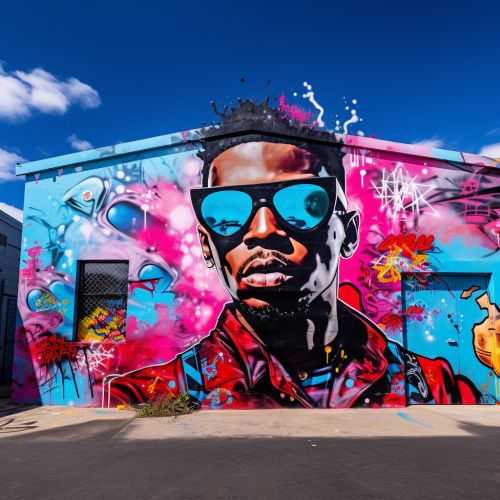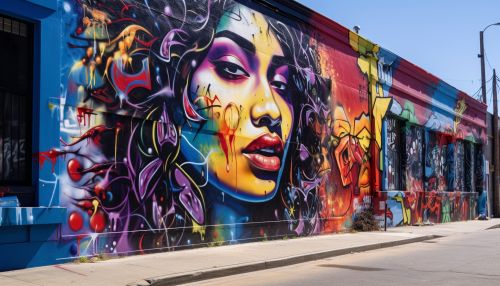Rap
Origins and Early History
Rap music, a genre of R&B, originated in the African American and Latino communities of the Bronx in New York City during the 1970s. It is characterized by its use of rhymed speech set to rhythmic beats, a style known as MCing. The term "rap" is derived from a slang verb that means "to talk" or "to converse", particularly in a boastful or improvisational manner.


The roots of rap can be traced back to the griots of West Africa, who were traveling singers and poets. Their oral traditions, including storytelling and call-and-response, are a significant part of the foundation of rap music. The tradition of toasting, which involves speaking or chanting over a rhythm or beat, also influenced the development of rap and is a key element in Jamaican dub music.
Evolution and Development
Rap music began to gain popularity in the late 1970s with the emergence of block parties, where DJs would play popular music and MCs would speak or rap over the beats. This style was popularized by artists like DJ Kool Herc, Grandmaster Flash, and the Furious Five. The Sugarhill Gang's "Rapper's Delight" (1979) is often considered the first rap song to achieve mainstream success.
In the 1980s, rap music began to diversify with the emergence of different styles and subgenres. The use of synthesizers and drum machines in production became more prevalent, leading to a more electronic sound. This period also saw the rise of socially conscious rap, with groups like Public Enemy and artists like KRS-One using their music to address social and political issues.
Subgenres and Styles
Rap music has evolved into a diverse genre with numerous subgenres, each with its own unique style and characteristics. Some of the most notable subgenres include:
- Gangsta rap: Characterized by its explicit lyrics and themes of street life, violence, and crime. Notable artists include N.W.A, Ice-T, and Tupac Shakur.
- East Coast rap and West Coast rap: These regional styles have distinctive sounds and themes, with East Coast rap often characterized by its complex lyricism and jazzy beats, and West Coast rap known for its laid-back rhythms and funk influences.
- Trap music: Originating from the Southern United States, trap music is characterized by its aggressive lyrical content and heavy use of 808 drum machines.
Cultural Impact and Influence
Rap music has had a significant cultural impact, influencing various aspects of society and culture. It has been a platform for social commentary, addressing issues such as poverty, racism, and police brutality. Rap has also influenced fashion, language, and visual art, and has been a key component in the rise of hip-hop culture.


Criticisms and Controversies
Rap music has faced criticism and controversy over the years. It has been criticized for its explicit content and themes of violence and misogyny. The use of explicit language and the portrayal of women in some rap songs have led to calls for censorship. However, many artists and fans argue that these themes are a reflection of the realities of urban life and that rap provides a voice for marginalized communities.
Conclusion
From its origins in the streets of the Bronx to its influence on global culture, rap music has evolved into a diverse and influential genre. Despite facing criticism and controversy, it continues to be a powerful platform for expression and social commentary.
